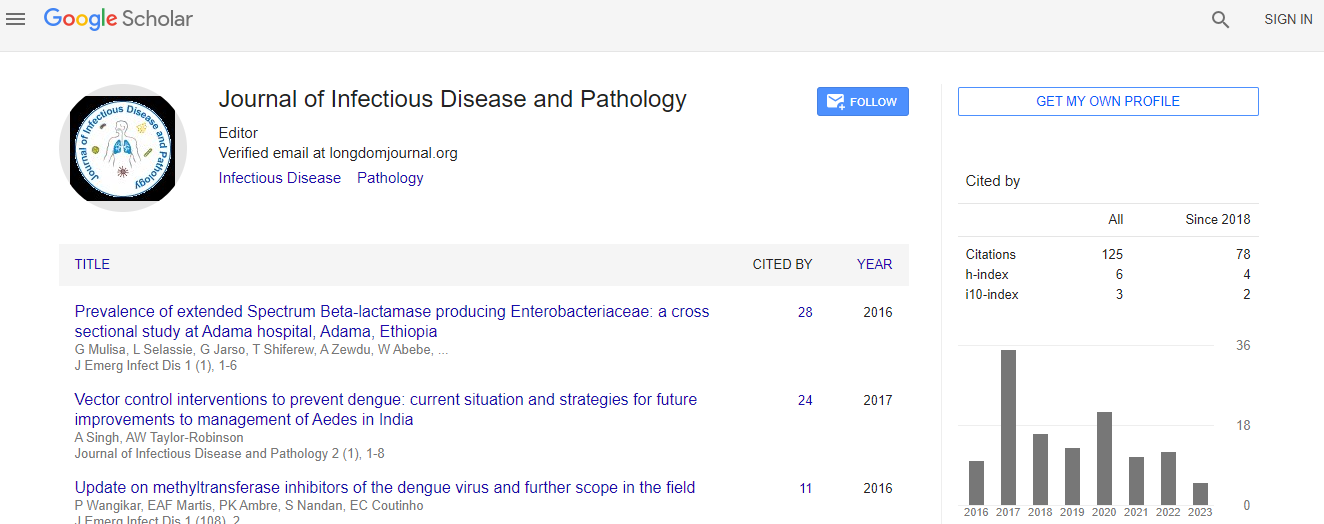Research Article
Prevalence of Extended Spectrum Beta-lactamase Producing Enterobacteriaceae: A Cross Sectional Study at Adama Hospital, Adama, Ethiopia
GirmaMulisa1*, Lakew G Selassie1, Tilaye W1, Godana Jarso1, Teklu Shiferew1, Adinew Zewdu2, Wake Abebe2, Feleke Belachew2 and Tsegaye Sewunet31Adama Hospital Medical College, Adama, Ethiopia
2Oromia Public Health Regional Laboratory, Adama, Ethiopia
3Jimma University, Department of Laboratory Science and Pathology, Jimma Ethiopia
- *Corresponding Author:
- Girma Mulisa
Adama Hospital Medical College
Adama, Ethiopia
Tel: +251911928774; P.O. Box: 84
E-mail: girmamulisa30@gmail.com
Received date: October 09, 2015; Accepted date: November 28, 2015; Published date: December 14, 2015
Citation: Mulisa G, Selassie LG, Jarso G, Shiferew T, Zewdu A, et al. (2015) Prevalence of Extended Spectrum Beta-lactamase Producing Enterobacteriaceae: A Cross Sectional Study at Adama Hospital, Adama, Ethiopia. J Emerg Infect Dis 1:102. doi:10.4172/2472-4998.1000102
Copyright: © 2015 Mulisa G, et al. This is an open-access article distributed under the terms of the Creative Commons Attribution License, which permits unrestricted use, distribution, and reproduction in any medium, provided the original author and source are credited.
Abstract
Background: The beta-lactam groups of antibiotics are the largest group of antibacterial agents used in clinical practice and they are frequently prescribed. The wide use of these antibiotics leads to the emergence and spread of resistant bacterial pathogens that produce the extended-spectrum β-lactamases (ESBL). Now days ESBLs producer bacteria are a common encounter in clinical practice and their prevalence varies from local to global. The aim of this study was to determine the prevalence of ESBL producing bacterial pathogens among Enterobacteriaceae isolates at Adama Hospital, Ethiopia.
Methods: Across sectional study was conducted from May 1, 2013-June 1, 2014 at Adama Teaching Hospital. A total of 384 consecutive non-repeat culture isolates were obtained from different clinical specimens of from patients visiting the Hospital. Bacterial strains were isolated following standard bacteriological techniques of American Society of microbiology. Antimicrobial susceptibility test was determined using Kirby-Bauer disk diffusion method and ESBL production was detected by modified double disc synergy test as stated on clinical and laboratory slandered institute. Data was analyzed using SPSS version 20.
Results: A total of 133 bacterial strains were isolated of which Enterobacteriaceae account for 68/133(51.1%). Twenty one isolates from the Enterobacteriaceae were suspected for ESBL production and 17/21 (80.95%) of them were confirmed to produce it with the overall prevalence of ESBL producers within the Enterobacteriaceae is 17/68 (25%). E. coli with the prevalence of 10/35 (28.57%) is the leading ESBL producer while Proteus species, Klebsiella species, E. cloacae and Citrobacter species accounted for 3/9 (33.3%), 2/8 (25%), 1/3 (33.3%) and 1/3 (33.3%) respectively.
Conclusion: The prevalence of ESBL producing Enterobacteriaceae was high among the clinical isolates of Adama Hospital Medical College. Because microbiology laboratories are limited in Ethiopia, the problem may go beyond expectation before it is unraveled. Thus routine screening of ESBL producing microorganisms from clinical samples should be considered where applicable.

 Spanish
Spanish  Chinese
Chinese  Russian
Russian  German
German  French
French  Japanese
Japanese  Portuguese
Portuguese  Hindi
Hindi 